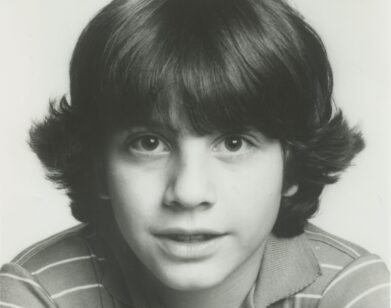Marcus Leatherdale Brings the Icons of ’80s New York Out of the Shadows
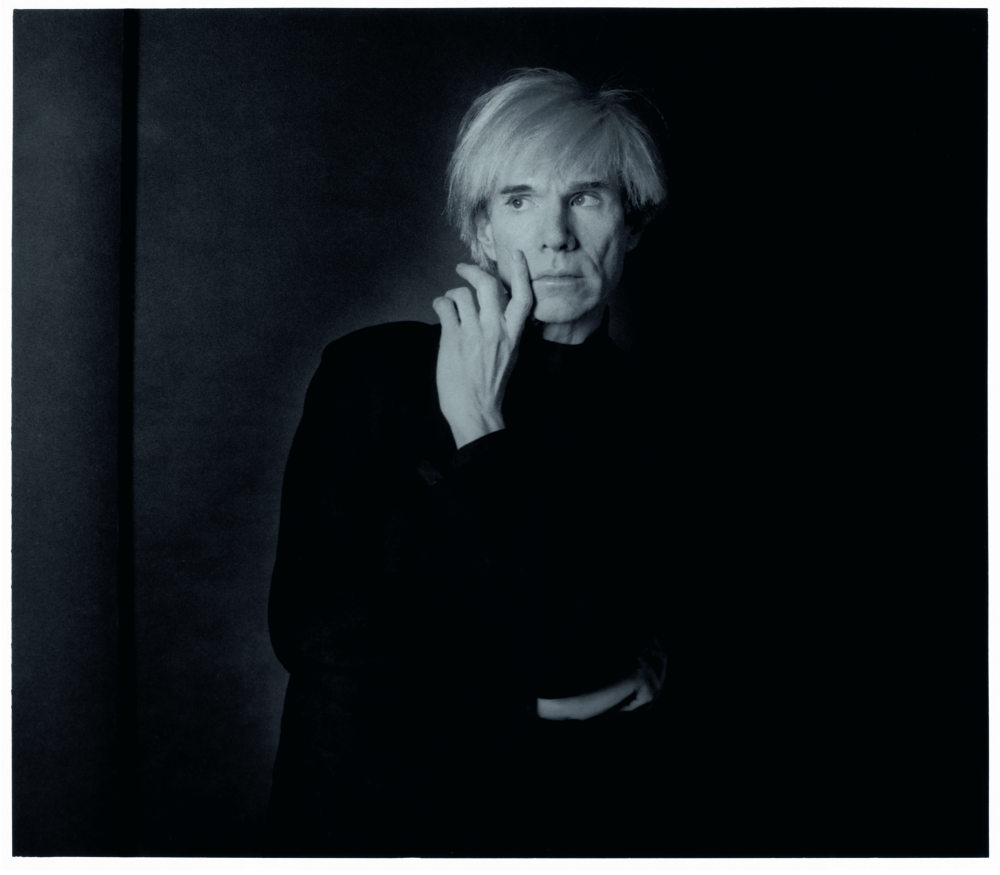
Andy Warhol, “Issey Miyaki,” 1983.
Photographer Marcus Leatherdale knows that it’s impossible to resurrect the New York City of the ’80s. Artists have moved on or passed away, and what was once the site of Andy Warhol‘s Factory is now a Petco. Nevertheless, his new photo book from ACC Art Books, Out of the Shadows, does just that, featuring some 60 portraits and still life photographs of New York icons like Debbie Harry, Divine, and Leigh Bowery. The book is more than just a collection of images; Leatherdale sees it as an “anthropological archive” of an era–and a city–that no longer exists. The nostalgia of his photographs are tangible, though Leatherdale is wary of the pitfalls of this romanticization: “The misconception of the 80s is that everybody just ran around getting high and going to nightclubs. That wasn’t really true,” he says. “People were seriously trying to do things and get by. It wasn’t all just a big, Andy Warhol Factory party.” Nevertheless, there’s a sincere adoration for bygone days that illuminates the pages in his book. Leatherdale’s subjects are positioned in intimate spaces, far from the wild glamorama of the New York City nightlife. “When the future is as precarious and surreal as it is nowadays, especially in America, people look to nostalgia for some sense of security, for something they can relate to,” he adds. We sat down to talk with Leatherdale about how he captured these cultural icons, that time he worked for Interview, and why, despite his current address, he never really left New York.
———
MARK BURGER: When did you leave New York City?
MARCUS LEATHERDALE: I haven’t really left it. I just don’t live there permanently anymore. I still have a bank account there. I still have an address there. But I’m in and out about every three or four times a year. But I kind of do backdoor New York. Just keep my foot in the backdoor because it took a long time to, to get in [Laughs.] So I’m not about to leave it. Besides, 21st century New York is not my New York. It’s another world. Which is kind of what this book is about. It’s about another time. It’s another New York.
BURGER: Seeing all these images together, what does that bring to mind?
LEATHERDALE: Well, it’s last man standing, in a way. It’s a little bit of survivors’ guilt. This work was basically put away, and collectors and dealers became very interested in that era, which convinced me to drag it out and dust it off and look at it from a different perspective. I look at the work much more objectively now–I couldn’t have done that before. It was just me, a twenty-something, photographing friends–it was just a day in the life. Now I can kind of look at them as an anthropological archive of that era that I had no idea was going to be extinct within 30 years. I didn’t even think I would make it to a senior citizen. It’s so surreal. It’s not that I was morbid and thought I would be dead or anything, but I just never thought of myself being 67. It was never part of the plan. [Laughs.] How old are you, by the way?
BURGER: I’m 24.
LEATHERDALE: I was about your age when I came to New York. There were not these larger-than-life figures at the time. They were just developing. I mean, you had Andy Warhol, but let’s just say Interview was what drew me to New York City. It was like a moth to the flame, so to speak. That’s why I’m kind of intrigued to do an interview with Interview Magazine because that’s what drew me to New York City. Andy Warhol’s Interview Magazine was the bible for me at the time. I did work at Interview–I mean, off and on. I never really worked commercially full-time anywhere. It all worked out for me, but things like that could work out in the ‘80s. It was a different time. Andy was a big icon to me. We weren’t mates, but we were certainly more than acquaintances. I think I had some New York City guardian angel because when I look at it, I can’t explain to you why it clicked.
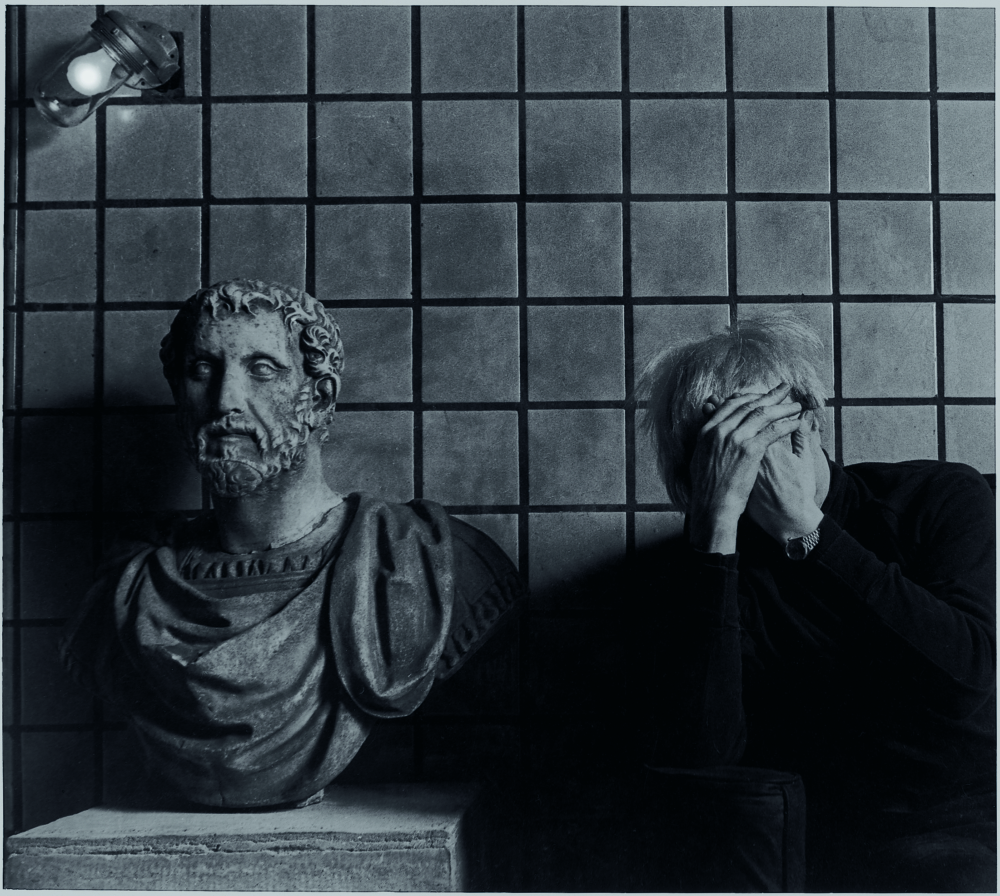
Andy Warhol, “Hidden Identities,” 1985.
BURGER: What can you tell me about the Andy Warhol portraits?
LEATHERDALE: The one in the book is lesser known, and that’s why it went in. He’s got his hand up to his cheek because he had a blemish that he didn’t know what to do with. He said, “What are you gonna do about that? Can you retouch?” And I said, “No, I don’t retouch so you better use your finger.” [Laughs.] So, that’s why he’s covering his boo boo, basically I won’t retouch. That lunch, when I think about it, was with her mother Kathy Hilton, Cheryl Teagues, and Peter Beard. I photographed him again at The Hidden Identity. That series was a dada series that was created by Steven Sabin for us for Details. It was an evening at the Underground, which ironically was the basement of the building that the Factory used to be in. Now it’s a Petco, I think. I took over the go-go cage and started to photograph unidentifiable portraits.
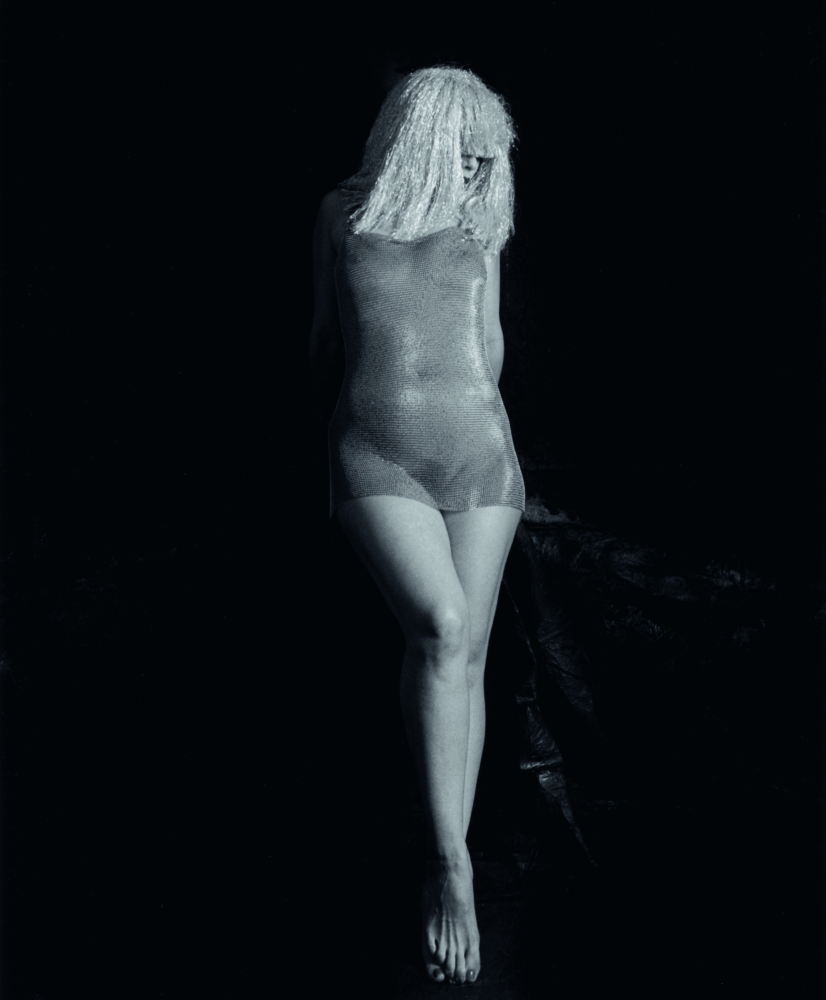
Debbie Harry, “Hidden Identities,” 1992.
BURGER: How about this Debbie Harry portrait?
LEATHERDALE: That was a Hidden Identities one. Details had actually folded, but I was thinking of resurrecting it as a series. She came up with that incredible metallic dress that I don’t think either one of us knew was going to be so transparent. But she didn’t seem to care. Besides, she looks good, you know? And she’s wearing a silver wig, which was a little odd. That was taken in the ’90s.
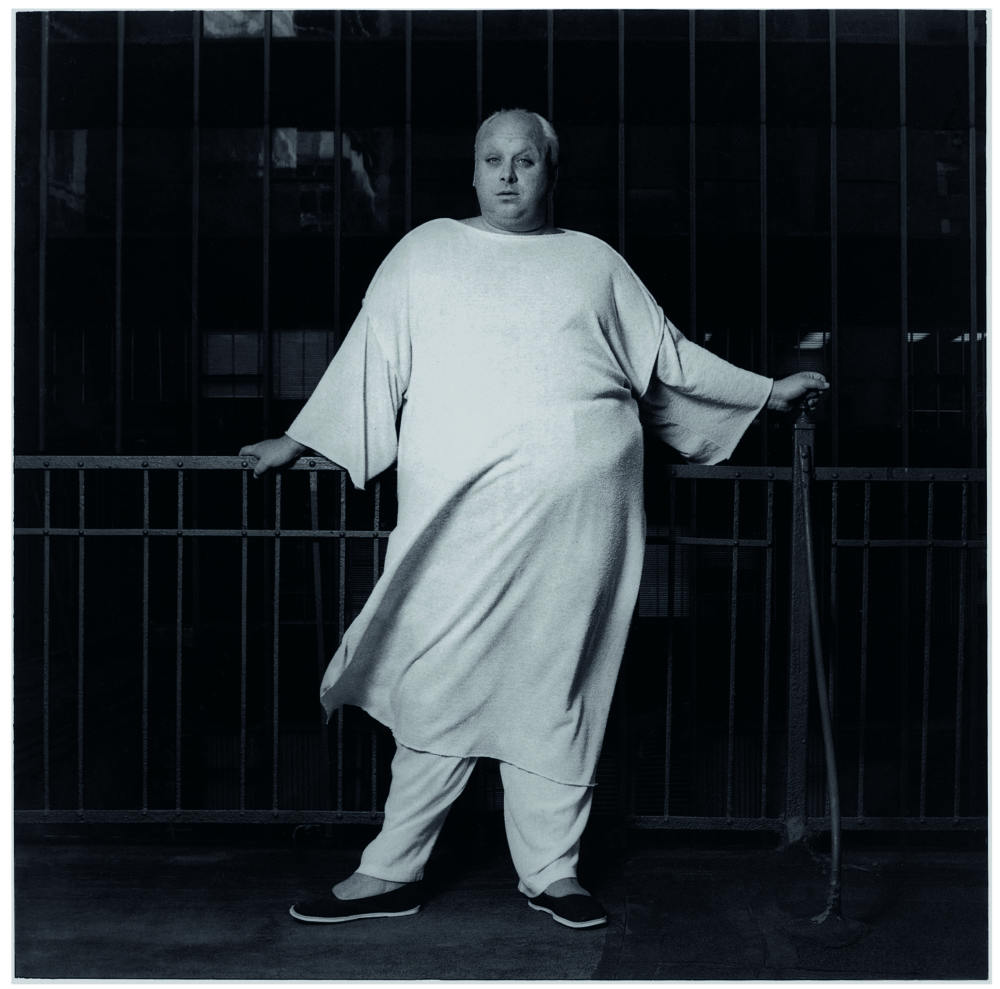
Divine, “Terrance of his Pent Hut,” 1981.
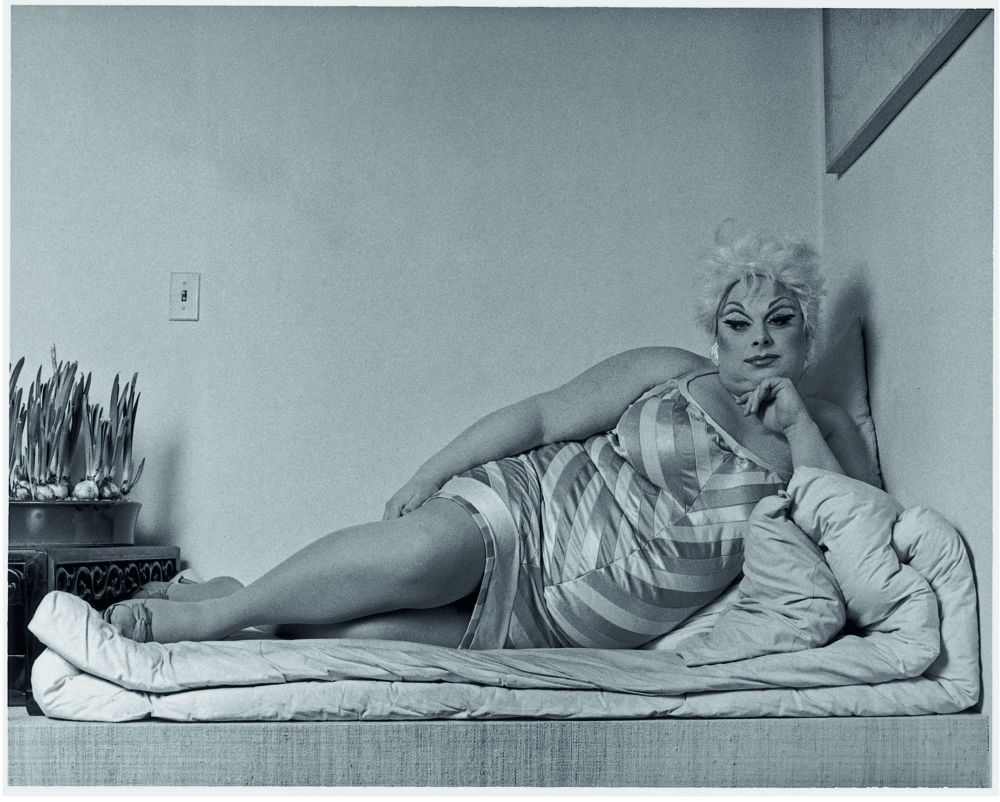
Divine, “Reclining,” 1981.
BURGER: What about the Divine images? It’s always so striking to see Divine out of drag.
LEATHERDALE: Except, if you knew him, he was not a drag queen. You’d never see him in drag unless he was being paid. He was an actor who was a female impersonator, and his character was Divine. You would never see Divine trotting down the street going to buy milk.
When I wanted to photograph him, we had to work out that I wanted to do it. He had to say, “Okay, I have a gig next week at 8, I’m gonna get ready and you can come before and take pictures.” And that’s how it happened. Otherwise, you’d never find him just lounging around like that. He lived on a futon. He lived on the 50s–we called it the “pent hut.” Not the penthouse, the “pent hut.” He wasn’t the outrageous, funny, crazy character. That’s Divine, that’s not necessarily him. He was soft-spoken, quite serious–not crazy serious, but he was not silly.
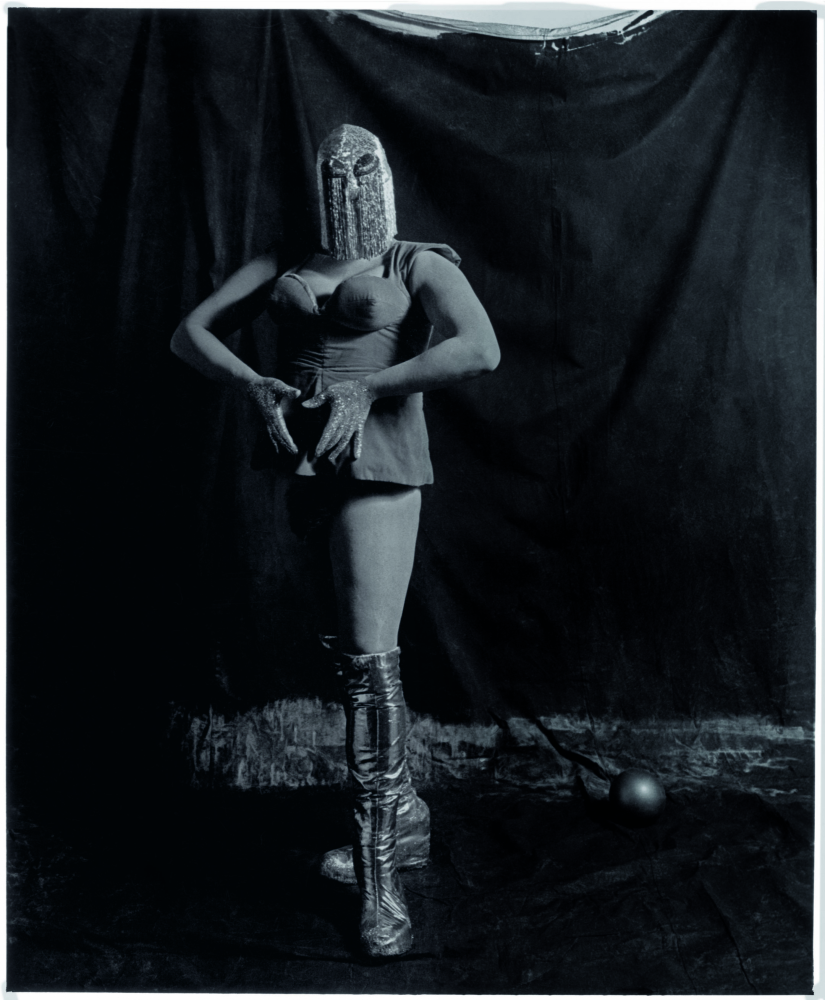
Leigh Bowery, “Hidden Identities,” 1990.
BURGER: When you wanted to photograph these people, was it as easy as calling them up?
LEATHERDALE: Well, it wasn’t that easy. I never called up out of the blue. I would meet them somehow, and then we would say, “Well, would you wanna do a photo session, and okay I’ll call you, or you call me, or we’ll have lunch.” It was more of a personal thing. The Leigh Bowery image—he’s wearing a beaded mask, a corset, and a merkin. And knee-high silver boots. I met him like that at the Roxy, I think. We sat around talking, and I just loved it because out of all that came this perfect British gentleman accent You thought you were talking to Sean Connery, not this alien creature. I said, “Listen, I would love to photograph you, would you like to do it?” And he said, “Sure.” So, the next day I called him and he came over just like that, in broad daylight, with a merkin and a beaded mask, those silver boots and butt hanging out.We took pictures. He was a lot of fun. It was really easy. The difficult part was getting him back into a taxi on Bowery.



